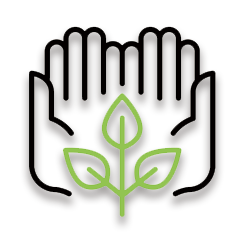A Global Challenge with Sustainable Solutions
Water scarcity is no longer a distant threat—it is a harsh reality affecting billions of people across the globe. According to the United Nations, 2.2 billion people lack access to safely managed drinking water, while nearly 4 billion experience severe water scarcity during at least one month of the year. As populations grow and climate change exacerbates droughts and water stress, the need for sustainable water management has never been more urgent.
The Causes of Water Scarcity
Water scarcity stems from a combination of natural and human-induced factors:
Climate Change: Rising temperatures and altered rainfall patterns are shrinking freshwater sources. For example, glaciers—critical water reservoirs for millions—are retreating at unprecedented rates.
Overuse and Mismanagement: Agriculture accounts for 70% of global freshwater use, with inefficient irrigation practices wasting massive amounts of water.
Pollution: Industrial waste, agricultural runoff, and untreated sewage contaminate freshwater supplies, rendering them unusable.
Population Growth: Rapid urbanization increases water demand, often outpacing the capacity of local infrastructure to provide clean and sufficient water.
The Impacts of Water Scarcity
The consequences of water scarcity are profound and far-reaching:
Health Crisis: Contaminated water sources lead to diseases like cholera, affecting millions annually. The World Health Organization estimates that 485,000 deaths each year are directly linked to poor water quality.
- Food Insecurity: With agriculture heavily reliant on water, droughts and reduced water availability directly impact crop yields, leading to hunger and economic instability.
Economic Losses: Industries dependent on water—such as manufacturing and energy—suffer disruptions, causing significant economic losses.
Conflict: In water-scarce regions, competition over limited resources often escalates into political and social tensions.
Sustainable Solutions to Water Scarcity
While the challenges are immense, innovative solutions offer hope:
Rainwater Harvesting: Capturing and storing rainwater for later use is an effective way to supplement water supplies. Countries like India are revitalizing ancient rainwater harvesting systems to meet modern needs.
Water Recycling and Reuse: Technologies like advanced filtration and desalination make it possible to treat wastewater for agricultural, industrial, or even potable use. Singapore’s "NEWater" initiative is a prime example of successful water recycling.
Efficient Irrigation Practices: Drip irrigation systems deliver water directly to plant roots, reducing wastage and improving crop yields.
Forest and Wetland Conservation: Healthy ecosystems play a crucial role in regulating water cycles. Protecting forests and wetlands ensures natural water filtration and storage.
Education and Awareness: Empowering communities with knowledge about water conservation can drive behavioral changes, reducing wastage and promoting sustainable practices.
Bamboo: An Unexpected Ally in Water Conservation
Bamboo, often celebrated for its versatility, also contributes to water sustainability. Its dense root system improves soil health and increases water retention, reducing the impact of droughts and flooding. In addition, bamboo cultivation requires far less water than conventional crops, making it a sustainable alternative for water-scarce regions.
How Consumers Can Make a Difference
Individual actions play a crucial role in combating water scarcity. By choosing products that prioritize sustainability, such as bamboo-based tissues and other eco-friendly goods, consumers support industries that minimize water use and reduce environmental footprints. Simple habits, like fixing leaks, installing water-efficient fixtures, and using rain barrels, can collectively make a significant impact.
The Path Forward
Water scarcity is a challenge we must confront together. Governments, businesses, and individuals all have a role to play in protecting and managing our most precious resource. By embracing sustainable practices, investing in innovative technologies, and fostering global cooperation, we can ensure that clean water is accessible to all—now and for future generations.
Let’s turn the tide on water scarcity. The solutions are within our reach, but the time to act is now.





